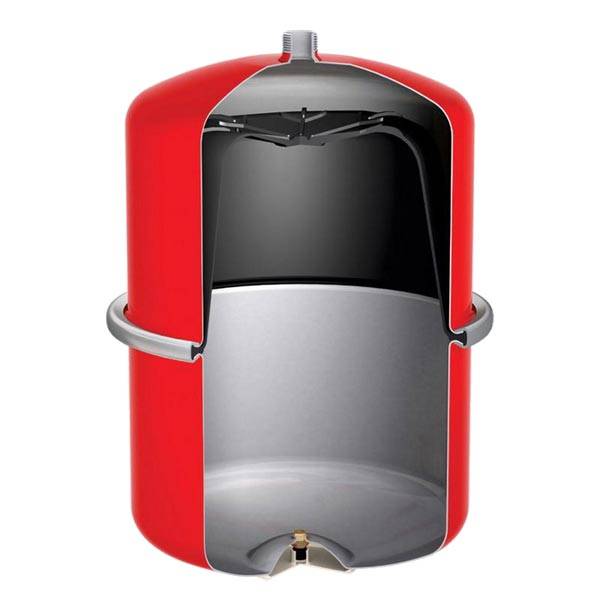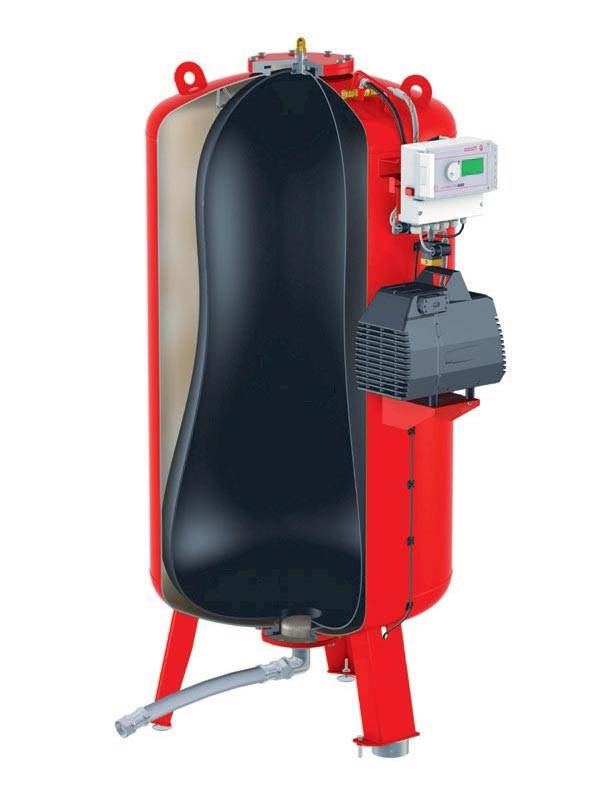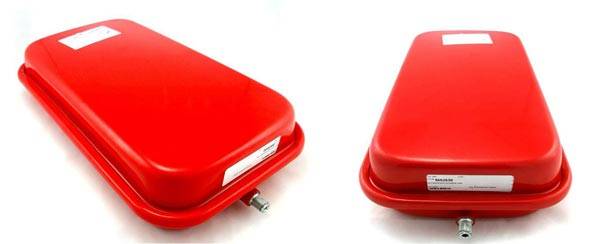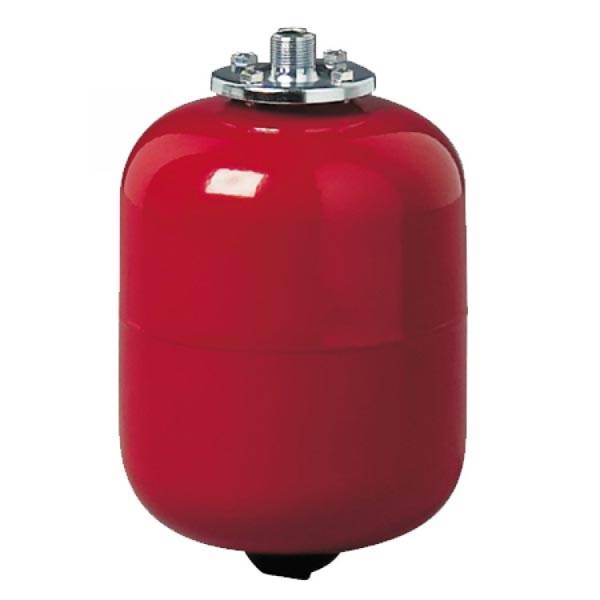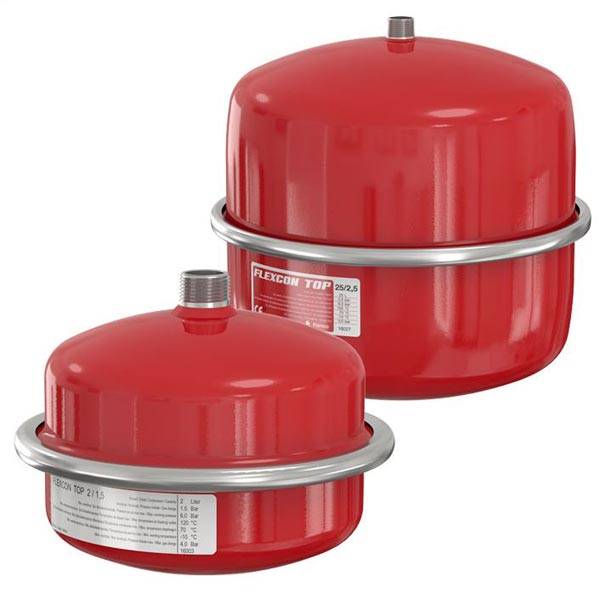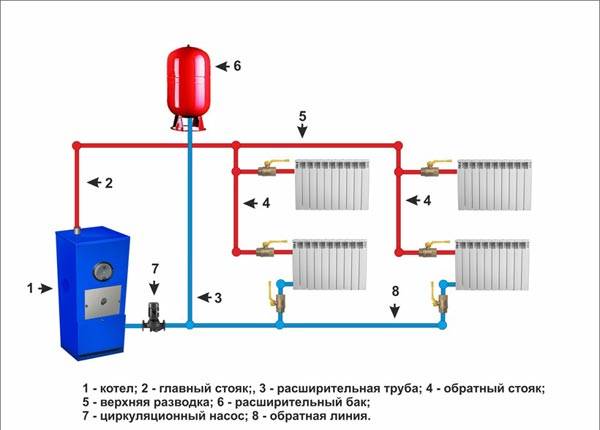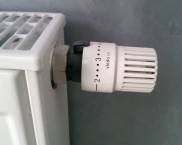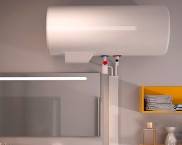Expansion tank for closed-type heating
MInstallation of a heating system is a responsible occupation that requires not only certain skills, but also an understanding of all its constituent parts. The expansion tank for closed-type heating is a component that prevents overpressure in the system. What it is, what types of it are and how to embed it into the system, now we will tell.
The content of the article
Video: an expansion tank for a heating system, what is it for?
Principle of operation
To understand how this device works, it is necessary to return to school knowledge in the field of physics. This tank takes in the "excess" water that occurs when heated in the heating system. After the coolant has cooled, it directs this reserve back into circulation. The term expansive fully conveys its purpose. This can be explained as follows: when the liquid in heating system heats up, it tends to expand and therefore the "extra" volume needs to go somewhere. And it is the expansion tank that readily accepts this surplus.
What are the types of this device
Since we are talking only about a closed-type system, we will tell you about the expansion tanks that take away excess pressure. First of all, I would like to note that you can find a variety of sizes and types on store shelves. Only red can be used for the heating system, since they are designed for high temperatures. Expansion tanks are classified by the type of membrane included in their composition. She may be:
- Fixed
- Removable
The first type is characterized by the presence of a built-in membrane, it divides the tank into 2 parts and presses it against the wall by the pressure of the injected air. When the water in the system heats up, its increased volumes, that is, its excess goes into the tank, while the membrane is pulled back and compresses the air that is in the other part of the membrane. When the water in the tank has cooled, it is sent back to the system.This type is very reliable, but only on condition that the pressure in the expansion tank of a closed-type heating is under control, that is, the presence of air in it.
The second type is a rubber container, which is located in the middle of the tank. When excess water enters it, it accumulates in this rubber container and does not come into direct contact with the tank. It is replaceable, which means it can be easily replaced if damaged. Although experts have noticed that the fixed membrane is most often made from better materials, it is less likely to deteriorate, while the quality of the replaceable membrane raises serious doubts. The replaceable one is more likely to deteriorate also because there is over-dimensional pressure on its lower part, thus an uneven load leads to ruptures and leaks.
There are differences in the size and shape of the tanks, they respectively have different volumes, which, before purchasing, must be calculated in accordance with the needs of your system.
Expansion tank calculation
Before purchasing an expansion tank, you need to find out exactly how much is needed. You can, of course, contact numerous specialized firms, which, using special algorithms, will calculate the required volume. This is not just a calculator, but a whole calculation algorithm that will take into account all the nuances. They can affect the stability of the system. This is very good, of course. But also very expensive.
You can use special formulas. But here it is important to carefully calculate everything, because a very small error will make the final result incorrect. Many factors are taken into account here, the volume of the heating system, the type of heat carrier used, expansion rates, pressure.
Expansion tank for closed-type heating, its calculation looks like this:
V = E * C / (1-Pmin / Pmax) / Kzap
FROM Is the total volume of the coolant.
E - coefficient that shows the expansion of the coolant. In this case, it is important to take into account the maximum permissible temperature at the time of the boiler operation.
Pmin - the primary pressure in the tank, it should not be less than the hydrostatic indicator of the system in general, exactly where the tank is located.
Pmax Is the maximum pressure that can be reached in the reservoir. Here you need to take into account the height difference, which can affect the pressure, as well as the location of the safety valve.
TOzap Is an indicator of the filling of the tank. It is expressed as a percentage, it is the ratio of the maximum volume of liquid to the total volume of the tank.
When the size of the heating system is taken into account, then all its components are included in it, that is pipes, radiators, warm floor, if he is, boiler and other elements. You can focus on the following data:
- Boiler room - 13 l / kW.
- Underfloor heating or other heating surface - 17 l / kW.
- Heating system, average value - 11 l / kW.
- Heating system convector - 8 l / kW.
- Ventilation system convector - 10.5 l / kW.
- Radiators - 15 l / kW.
This does not include data on the volume of storage fluids.Another option, for calculating the expansion tank of a closed-type heating system, is an online calculator, in which you need to specify all the same data as in the formula, and here you can have complete confidence in the accuracy of the result, provided that all the data are correct.
Calculator for calculating an expansion tank for a heating system
Mounting
Before installation you need:
- Calculate the location so that it can be easily reached at any time.
- Provide for the possibility of dismantling the connection pipes.
- Check if the diameter of the connecting pipe and the pipeline to which it will be connected are the same.
- Choose a place for setting the current temperature indicator.
- Provide for the presence of shut-off valves.
Before mounting the tank, you need to organize a special mount for it, the power of which will correspond to the overall dimensions and weight of the tank. This device must be hung in the direction of the heating unit. The installation should be carried out from the side where the pump is located, and at the same time, there should be no other elements between it and the tank that affect the flow of the coolant. The power line should be connected to the circulation circuit.
The tank must be secured with clamps after installation. Please note that mounting it in subzero temperatures is unacceptable. Here are some other things to note:
- The air valve must be located in an accessible place so that the required pressure can be set.
- All adjusting mechanisms must be accessible.
- The pipes must not put pressure on the tank.
conclusions
To correctly select and install an expansion tank, you need to arm yourself with practical knowledge and skills. The pressure in the expansion tank of a closed-type heating must correspond to the volume of the system, otherwise it will not be able to perform its functions. Before installing this heating component, you need to master the theoretical material and carry out all the preparatory work.
Expansion tank installation video tutorial




